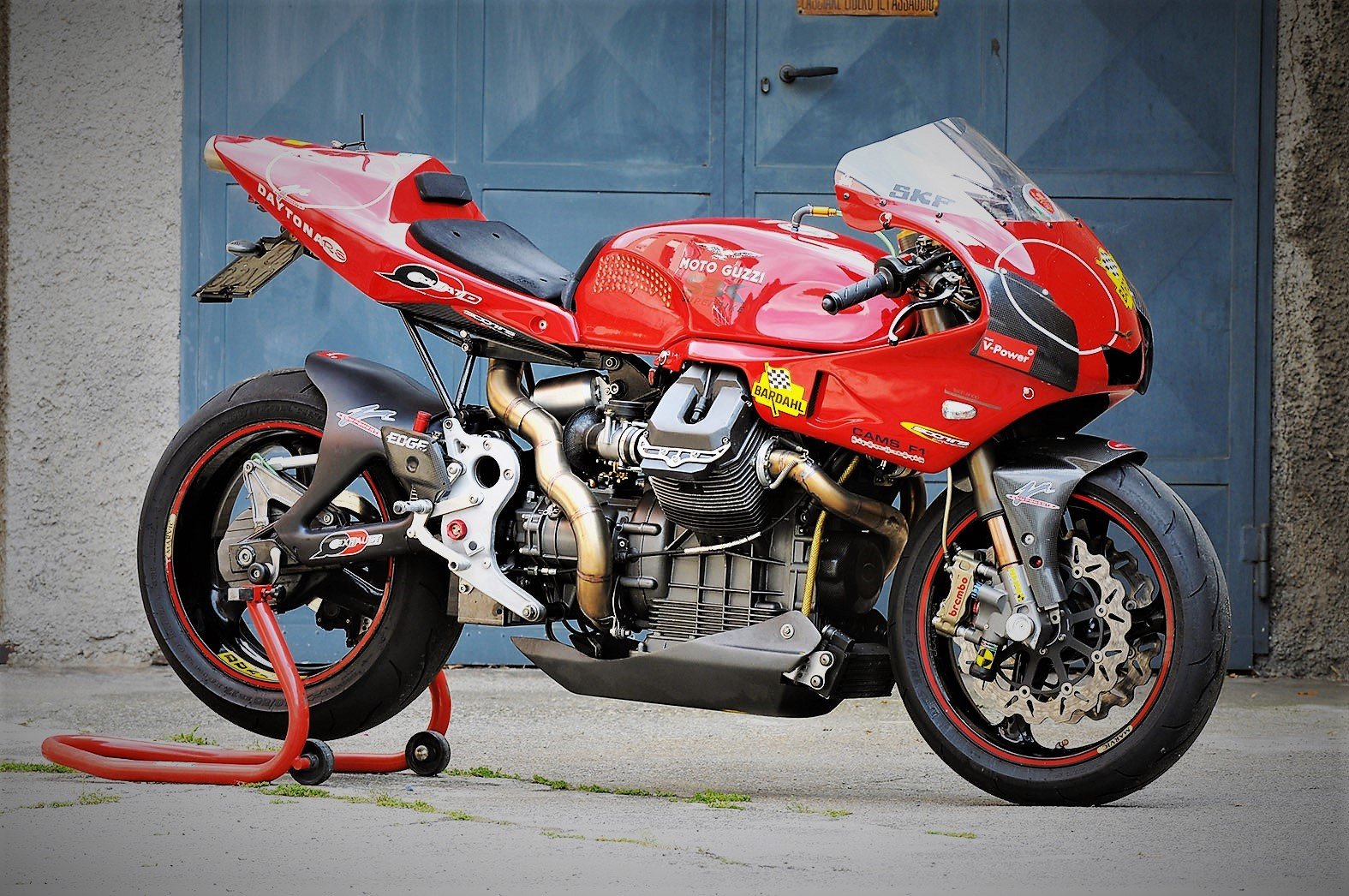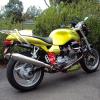-
Posts
4,556 -
Joined
-
Last visited
-
Days Won
235
Content Type
Profiles
Forums
Events
Gallery
Community Map
Everything posted by Lucky Phil
-
Seems legit Ciao
-
The terminology is too broad and need defining to provide an informed answer. What is "best power" ? peak power? best power curve? engine installed in the bike? engine alone on a test bench? Filters by nature are restrictors which by definition means they restrict airflow. if you end up with a better power curve with the filter it means there is a fuel mapping issue and the restriction is assisting in minimising that. If you get no net loss in peak power (after optimised tuning) with a filter then it means that the intake systems flow limiting restriction is downstream somewhere like the throttle body, port shape or size or valve size. If you are after pure peak power and best power curve then an unfiltered airbox with an effective atmospheric delivery system devoid of size and shape restrictions dictated by limitations of the available space will be best.After that its all compromise. Ciao
-
Ha, My bags are packed:) Ciao
-
I spent 2 weeks in Seattle taking delivery of a company Jet in 2001 and I had all but 1 day of sunny skies and nice weather. The locals couldn't believe my weather luck. Ciao
-
A vent tube running externally to atmosphere instead of into the airbox rings alarm bells for me to some extent. Bespeaks of excess oil ending up in the airbox which in turn suggests a heavy breathing engine. I'd like to know what the modifier was trying to achieve here. It could of course just be a Muppet owner without a clue I suppose. Ciao
-
There are 2 threads to this docc. Firstly a well designed airbox is designed to harness the natural intake resonance of the engine and feed a cool laminar flow of air to the throttle body. Forget about ram effect for the majority of riding even on the track as it has a minor effect. These days even street bikes use this resonate effect together with ecu controlled variable length inlets to smooth out the torque curve. The V11 also uses intake and airbox resonance to advantage. Secondly is filtering. I read a long time ago a comparison of elements of different styles and from memory the conclusion was pretty much the same as for oil filters. less restriction means less effective filtering. So at the end of the day you get the choice of free flowing and reduced filtering capability or less free flowing and more effective filtering. You get to choose. I used to ride bevel drive Ducati's around for a few years with just wire screened intake trumpets. The Nikasil cylinders and pistons used to be ok but the valves and valve seats used to take a bit of a hammering. Back in those days a std Ducati filter was a tin box and concertina hose for each carb and just didnt look cool at all, before the days of inlet resonance tuning. As soon as manufacturers started taking the induction side seriously I gave up on such silliness. Personally I'd stick with the paper element and leave the horrible messy oily gauze thing for lawn mowers and such. Of course the only reason they came into being at all was for dirt bikes back in the late 60's where you couldn't be changing a paper filter after every ride. You needed something economical and easy for the owner to service and being most were competition bikes the manufacturers didnt need to worry about warranty claims for high wear rate. It all grew from there. Ciao
-
As am I:) Ciao
-
If you live in NSW Australia after 3 years from new every vehicle needs to have a roadworthy inspection every year including a braking efficiency test. Its a real PITA. Ciao
-
Carbon fibre.......21st century chrome:) Ciao
-
I agree Pete. Losing the airbox was never an option for me. Ciao
-
Yes docc the math behind the cooling airflow was complicated:) Cant stand the idea of ditching a decently working airbox, dumbest move ever. Maybe I'll get there one day. Ciao
-
I'm calling the airbox done.The modified area could be better aesthetically but this plastic is almost impossible to finish nicely. I might make some little 1/4 moon 1mm thick ally plates to cover the modified area painted black and attached by some small PK screws to make it look nicer but once the side covers go on I doubt you'll notice the area. Ciao
-
https://www.ebay.com.au/itm/Moto-Guzzi-V11-Seat-Cowl-With-Cushion/174118602385?hash=item288a470691:g:HfYAAOSw8hpd65Ow&frcectupt=true Ciao
-
Gee they sound like professionals that know their stuff..........Not You could always ask Pete Roper if he can source you a T5 bevel box and maybe check it over for you and ship it. I reccon shipping would be about $100us Ciao
-
Ok Chuck interesting. No fibres here though. The airbox material is quite strange in that it doesnt actually melt so you cant melt the base material and combine it with a filler rod like welding you need to abandon trying to melt the base material and use the filler rod like bronze welding or brazing or soldering. If you put a hot iron against it it will eventually produce a black liquid which at first I thought was melted material but when it dried it was rock hard brittle. I think it was just oils being excreted under high heat. If you hit it with a heat gun on full temp it just goes all rubbery but wont actually melt, but it does float in water. I'm still thinking its a cross linked Polyethylene but for anyone wanting to join it the method I have used seems really sound. BTW docc I think the inlet trumpets will be the same material, I have an old butchered one I'll material test when I get a chance. I've done hours of reading on plastic in the last week and its a very complex and involved topic. Pretty soon most of an internal combustion engine will be made from it with lots of serious research being done on using it for crankshafts,engine blocks,rods and even exhaust systems. Weight reduction being the primary aim. presently intake manifolds,rocker covers,cooling system fittings and oil pans are the major components usually made from a nylon base material but within 10 years it seems most of the engine will be plastic. My wife now understands why I'm lying awake at 3am most nights Ciao
-
Acerbis got back to me and said to contact Guzzi as it was made to their specs. Should have realised that would;d be the case. Anyway its sorted now with a strong and decent result by lets call it airless plastic brazing. Polyethylene rods used as a hot glue. Not welded but closer to brazed. Ciao
-
No fibres present in the plastic and JB steel weld can be picked off with your fingernail even with a well prepared surface. It would be interesting to know what it is exactly but the Polyethylene welding rod seems to work which is a recognised process for cross linked poly, although as I said its not really welding more hot gluing. Been reading up on high surface energy plastics, interesting stuff. I tried several adhesives I know work well and all of them were a failure. Fortunately the fill piece doesn't have a big job to do just support about 1/3 of the seal and keep the dust out. Ciao
-
No identification of any sort. I have now found it can be well bonded by using a Polyethylene welding rod as a hot melt glue. Gives a strong bond. The airbox material itself doesnt melt but the rod bonds it well. Ciao
-
So here's the airbox task. Hole needs to be raised 16mm or there abouts and the bottom filled in. The airbox looks like its made of cross linked Polyethylene which isnt weldable....naturally:)Typically I just looked at it and thought it was. I've learned quite a bit about plastic in the last week and I now have a plan. Ciao





